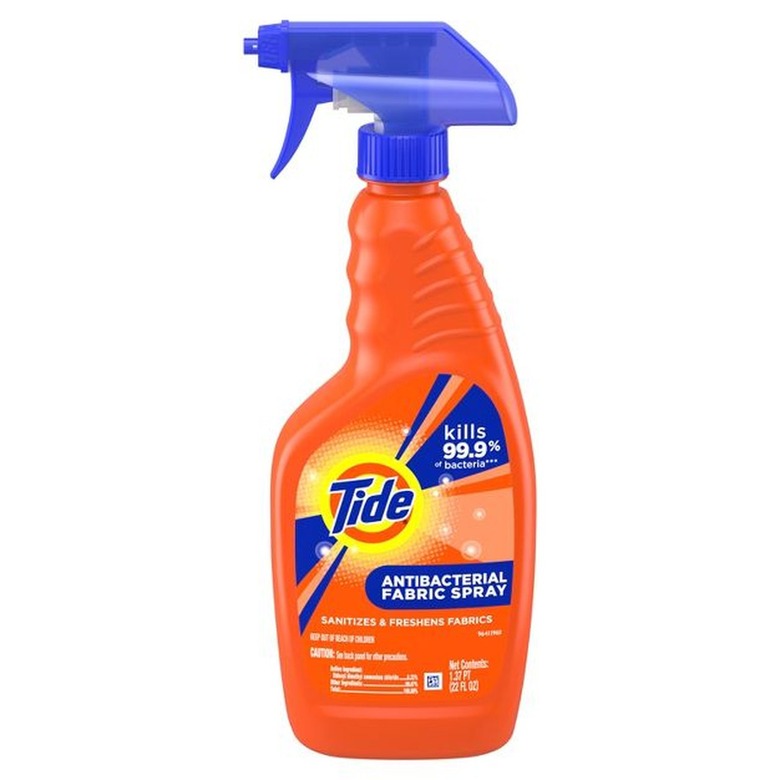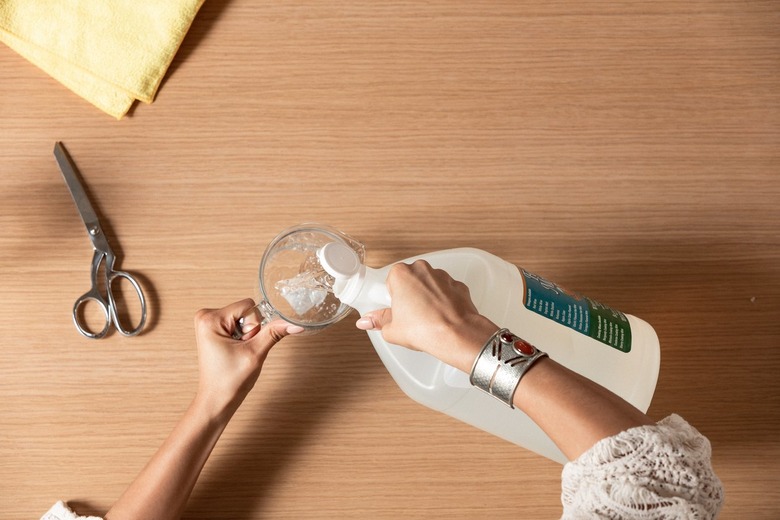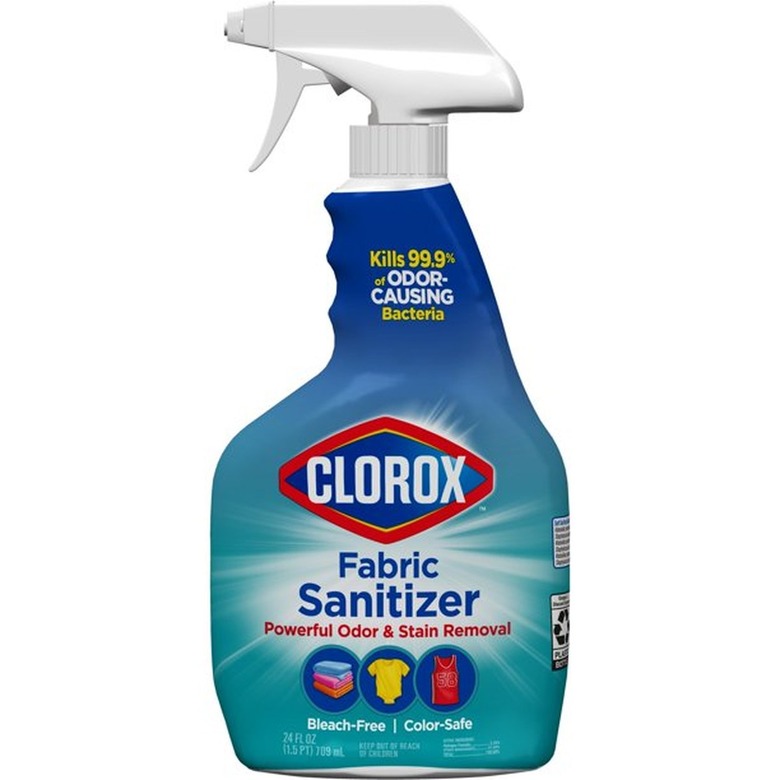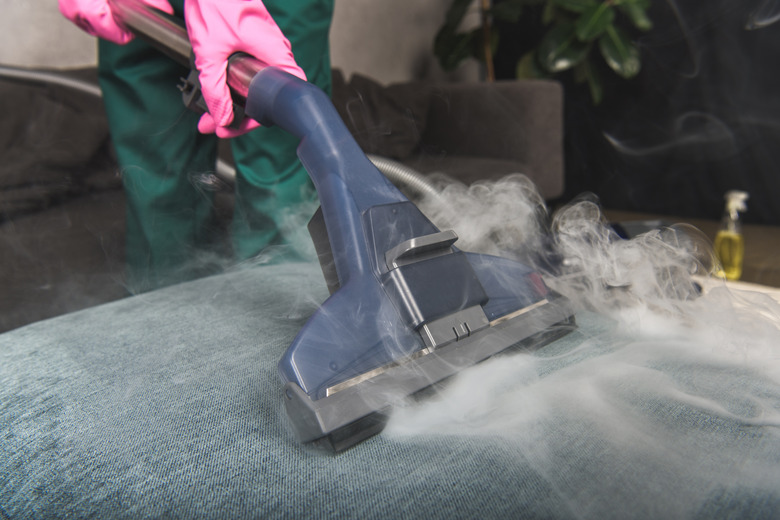3 Safe Disinfectant Sprays For Fabrics That Get The Cleanest Clean
We may receive a commission on purchases made from links.
For household purposes, the difference between disinfecting and sanitizing is relatively small — disinfecting kills nearly all germs and bacteria, while sanitizing eliminates many but not all. Certain fabric-safe sprays help to kill germs and bacteria in carpets, upholstery, and other fabrics too large to fit in the washing machine. Yet because they can't completely penetrate the material without damaging it, it's not possible for them to completely disinfect fabrics. They can, however, sanitize the fabric when used properly.
For a thorough cleaning, use hot water and soap or a steam cleaner first to disinfect the fabric and then use the fabric-safe sanitizing spray of your choice to finish the job. Always make sure any method is safe for the material before you use it.
1. EPA-Certified Fabric Sprays
1. EPA-Certified Fabric Sprays
Cleaning aisles are filled with fabric-refresher sprays that promise to eliminate tough odors while adding a fresh scent to upholstery, carpets, and other soft surfaces. But only a few actually sanitize fabric, and if used incorrectly, even these products accomplish little more than eliminating odors. Look for store-bought fabric disinfectant sprays with an EPA registration number; this indicates that the product is certified as a disinfectant by the government.
Be sure to read the directions thoroughly before use. Most fabric-safe sprays disinfect nonporous surfaces but will only sanitize soft surfaces when used correctly. In most cases, you'll need to spray the fabric evenly so that it remains wet for at least five minutes, to sanitize. Sometimes, the spray may be suitable only for sanitizing small areas.
2. White Vinegar to Sanitize Fabrics
2. White Vinegar to Sanitize Fabrics
Despite its reputation as an all-natural way to disinfect hard surfaces, white distilled vinegar still isn't recognized as a true disinfectant, especially for fabrics. However, it kills germs in several other capacities, and when used after a thorough cleaning with warm water and soap, vinegar aids in keeping fabrics in your home clean and fresh.
Dilute the vinegar with an equal amount of water, and test the solution on a hidden area; some fabrics, especially acetate, break down when subjected to vinegar's acidity. Spritz the material lightly, until just damp, and let it air dry. If you're averse to the strong scent of vinegar, a few drops of natural essential oil can help mask the smell. Once the vinegar dries, no trace of its scent remains, but the fragrance of the oil lingers.
3. Color-Safe Bleach Spray for Fabrics
3. Color-Safe Bleach Spray for Fabrics
Chlorine bleach is the go-to disinfectant for hard surfaces in many homes, but its color-removing properties make it unsuitable as a fabric spray. Oxygen bleach is an effective alternative, killing germs and bacteria without altering the color of your carpet, upholstery or drapery. Dilute it with hot water according to package directions before misting it lightly over fabrics. Because oxygen bleach breaks down as it's diluted, don't make a large batch to keep on hand; it's most effective when used right after mixing.
Steam Cleaning to Disinfect Fabrics
Steam Cleaning to Disinfect Fabrics
Steam cleaning allows you to truly disinfect fabrics rather than just sanitize them. Unlike shampooing products, steam cleaning relies solely on the vapors of hot water to eliminate germs and bacteria. The key for effective disinfecting lies in the temperature of the steam at the appliance's nozzle and the length of time you spend treating each section. The ideal temperature is 212 degrees Fahrenheit or hotter, which disinfects upholstery and other fabrics in as little as one minute per section. Cooler temperatures take longer; at 158 F, you'll need to spend about five minutes per section.
References
- Centers for Disease Control and Prevention: How to Clean and Disinfect Schools to Help Slow the Spread of Flu
- North Carolina State University Cooperative Extension: Cleaning Flooded Upholstered Furniture, Curtains, Bedding, Table Linens, and Other Household Textiles
- Utah State University Extension: Homemade Household Cleaners (That Really Work)
- Michigan Department of Community Health: Guidelines for Environmental Cleaning and Disinfection of Norovirus




